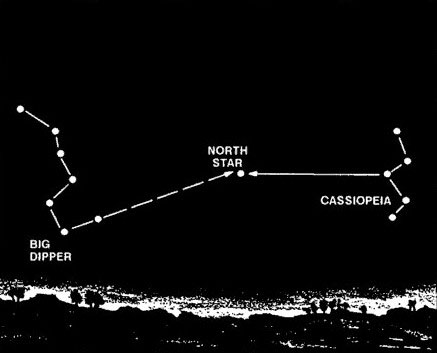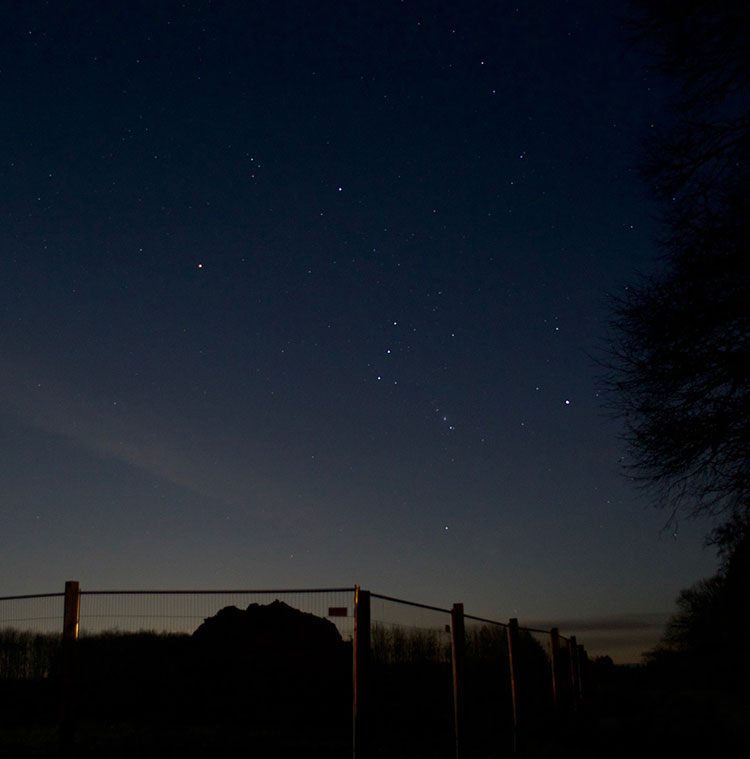We have our smartphones, GPS, maps, and compasses. But what would we do without these? Do you know how to use the sky for navigation?
What would we do if we ended up lost in the wild, and needed to find our way home solely with the environment around us? The ability to read the stars is a long-forgotten skill, much like forecasting weather, yet it used to be something that was regularly taught. How can a knowledge of astronomy make us a better prepper? How can a briefing in this field give us another tool for survival?
Let’s take a look!
Note: I’m assuming that the majority of the readers of this piece reside within the Northern Hemisphere. If you live within the Southern Hemisphere, the constellations that you’ll need will be completely different, and and what follows won’t work.
#1 – Use the Moon to Find North and South
You will need a crescent moon to do this, and whether the moon is a waxing crescent or a waning crescent, the basic principle is still the same. What you’re going to do is draw an imaginary line from the top point of the moon to the bottom point of the moon. Now, continue that imaginary line down to the horizon on earth.
If it is a waxing crescent when you are using this method, the imaginary line will give you a rough estimation of south. If it is a waning crescent, the imaginary line will give you a rough estimation of north.1

Here’s a poem I wrote to help you remember:
The smile grows
As the moon opens its mouth
Tip to tip
That’ll take you South!
#2 – Use the Moon to Find East and West
If the moon rises before the sun sets, then that means the moon is a rough guide for west. If it’s not until after midnight that you see the moon rise, heading towards the moon will be a rough easterly direction.1
I made a nifty poem again to help you out with this one:
See the moon when you need rest?
That means that you’re heading West!
#3 – Use the North Star to Go… North
Spotting the North Star takes a bit more practice than using directions from the moon. The secret is to find the Big Dipper first. When you find the Big Dipper, use the two stars that form the vertical edge of the bowl away from the handle. Draw an imaginary line up and away from those two stars and follow it roughly six times the distance of those two stars from each other. That’ll direct you to the North Star!1

If you can’t find The Big Dipper, then you can use Orion to give you an idea of where the North Star is as well. Draw an imaginary line from Orion’s left hip up through his left shoulder and continue to follow it to where the North Star is.2
That’ll take you north, but I’m guessing you already knew that.
#4 – Use Orion’s Belt to Find East and West
Orion has always been my favorite constellation. It’s incredibly easy to locate regardless of the time of year. Orion has three stars that form his belt. His belt line will give you a rough estimation of east and west.

#5 – Use the Sun to Find North and South
Don’t forget about the sun! It’s your last tip on how to use the sky for navigation.
Aside from the obvious of the sun rising in the east and setting in the west, you can also determine a rough approximation of north and south with nothing more than an analog wristwatch and a sunny day. Point the hour hand towards the sun. The midpoint between the hour hand and 12 is south.3
Bonus Tip: Use the Moon as a Calendar
If you’ve ever been backpacking for any length of time (and I’m talking days to weeks here), you know how easy it is to lose track of how many days you have spent out there. That’s where the moon can help you. It takes the moon 29.5 days to complete its revolution around the earth. So if you can see the moon the first night that you are out there, and notice that it’s a full moon, you’ll know the next time that you see the full moon that it’s been 29.5 days.
Things Are Looking Up
A working knowledge of how to use the stars and moon to your advantage does not take much time to master, but it does yield a rich harvest of benefits. Hopefully, you’ve found the above informing and insightful and – if you are ever lost- can look up to use the sky for navigation.
Article sources:
- The Complete Illustrated Handbook of Survival pg 106-107
- The SAS Survival Handbook pg 362
- Survival, Evasion, and Recovery: Multiservice Procedures for Survival Evasion, and Recovery II-3
- North Start photo credit: Free Grunge Textures – www.freestock.ca Alaska Grunge Flag via photopin (license).
Are there other astronomy tricks that you’ve discovered which can aide the prepper?
